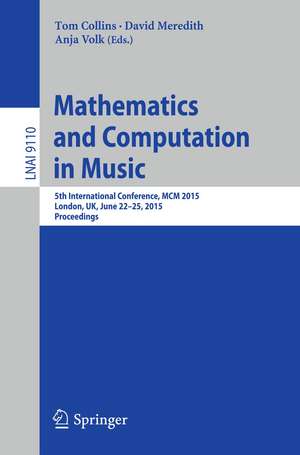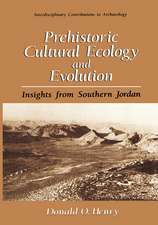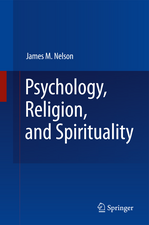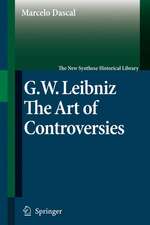Mathematics and Computation in Music: 5th International Conference, MCM 2015, London, UK, June 22-25, 2015, Proceedings: Lecture Notes in Computer Science, cartea 9110
Editat de Tom Collins, David Meredith, Anja Volken Limba Engleză Paperback – 26 iun 2015
Din seria Lecture Notes in Computer Science
- 20%
 Preț: 1061.55 lei
Preț: 1061.55 lei - 20%
 Preț: 307.71 lei
Preț: 307.71 lei - 20%
 Preț: 438.69 lei
Preț: 438.69 lei - 20%
 Preț: 579.30 lei
Preț: 579.30 lei -
 Preț: 410.88 lei
Preț: 410.88 lei - 17%
 Preț: 427.22 lei
Preț: 427.22 lei - 20%
 Preț: 596.46 lei
Preț: 596.46 lei - 15%
 Preț: 448.04 lei
Preț: 448.04 lei - 20%
 Preț: 353.50 lei
Preț: 353.50 lei -
 Preț: 389.49 lei
Preț: 389.49 lei - 20%
 Preț: 309.90 lei
Preț: 309.90 lei - 20%
 Preț: 645.28 lei
Preț: 645.28 lei - 20%
 Preț: 763.23 lei
Preț: 763.23 lei - 15%
 Preț: 580.46 lei
Preț: 580.46 lei - 20%
 Preț: 310.28 lei
Preț: 310.28 lei - 20%
 Preț: 655.02 lei
Preț: 655.02 lei - 20%
 Preț: 1183.14 lei
Preț: 1183.14 lei - 20%
 Preț: 340.32 lei
Preț: 340.32 lei -
 Preț: 449.57 lei
Preț: 449.57 lei - 20%
 Preț: 591.51 lei
Preț: 591.51 lei - 18%
 Preț: 938.83 lei
Preț: 938.83 lei - 20%
 Preț: 337.00 lei
Preț: 337.00 lei - 20%
 Preț: 649.50 lei
Preț: 649.50 lei - 20%
 Preț: 607.40 lei
Preț: 607.40 lei - 20%
 Preț: 1414.79 lei
Preț: 1414.79 lei - 20%
 Preț: 1024.44 lei
Preț: 1024.44 lei - 20%
 Preț: 583.40 lei
Preț: 583.40 lei - 20%
 Preț: 453.32 lei
Preț: 453.32 lei - 20%
 Preț: 575.49 lei
Preț: 575.49 lei - 20%
 Preț: 1075.26 lei
Preț: 1075.26 lei - 20%
 Preț: 585.88 lei
Preț: 585.88 lei - 20%
 Preț: 825.93 lei
Preț: 825.93 lei - 17%
 Preț: 360.20 lei
Preț: 360.20 lei - 20%
 Preț: 763.23 lei
Preț: 763.23 lei - 20%
 Preț: 340.32 lei
Preț: 340.32 lei - 20%
 Preț: 504.58 lei
Preț: 504.58 lei - 20%
 Preț: 369.13 lei
Preț: 369.13 lei - 20%
 Preț: 580.93 lei
Preț: 580.93 lei - 20%
 Preț: 343.62 lei
Preț: 343.62 lei - 20%
 Preț: 350.21 lei
Preț: 350.21 lei - 20%
 Preț: 583.40 lei
Preț: 583.40 lei - 20%
 Preț: 583.40 lei
Preț: 583.40 lei - 15%
 Preț: 438.59 lei
Preț: 438.59 lei - 20%
 Preț: 341.95 lei
Preț: 341.95 lei - 20%
 Preț: 238.01 lei
Preț: 238.01 lei - 20%
 Preț: 538.30 lei
Preț: 538.30 lei
Preț: 337.85 lei
Preț vechi: 422.31 lei
-20% Nou
Puncte Express: 507
Preț estimativ în valută:
64.67€ • 70.27$ • 54.36£
64.67€ • 70.27$ • 54.36£
Carte tipărită la comandă
Livrare economică 21 aprilie-05 mai
Preluare comenzi: 021 569.72.76
Specificații
ISBN-13: 9783319206028
ISBN-10: 3319206028
Pagini: 380
Ilustrații: XIV, 392 p. 147 illus.
Dimensiuni: 155 x 235 x 27 mm
Greutate: 0.57 kg
Ediția:2015
Editura: Springer International Publishing
Colecția Springer
Seriile Lecture Notes in Computer Science, Lecture Notes in Artificial Intelligence
Locul publicării:Cham, Switzerland
ISBN-10: 3319206028
Pagini: 380
Ilustrații: XIV, 392 p. 147 illus.
Dimensiuni: 155 x 235 x 27 mm
Greutate: 0.57 kg
Ediția:2015
Editura: Springer International Publishing
Colecția Springer
Seriile Lecture Notes in Computer Science, Lecture Notes in Artificial Intelligence
Locul publicării:Cham, Switzerland
Public țintă
ResearchCuprins
A Structural Theory of Rhythm Notation Based on Tree Representations and Term Rewriting.- Renotation from Optical Music Recognition.- Foundations for Reliable and Flexible Interactive Multimedia Scores.- Genetic Algorithms Based on the Principles of Grundgestalt and Developing Variation.- Describing Global Musical Structures by Integer Programming on Musical Patterns.- Improved Iterative Random Walk for Four-Part Harmonization.- Location Constraints for Repetition-Based Segmentation of Melodies.- Modeling Musical Structure with Parametric Grammars.- Perfect Balance: A Novel Principle for the Construction of Musical Scales and Meters.- Characteristics of Polyphonic Music Style and Markov Model of Pitch-Class Intervals.- A Corpus-Sensitive Algorithm for Automated Tonal Analysis.- Finding Optimal Triadic Transformational Spaces with Dijkstra’s Shortest Path Algorithm.- A Probabilistic Approach to Determining Bass Voice Leading in Melodic Harmonisation.- Hypergestures in Complex Time: Creative Performance Between Symbolic and Physical Reality.- Generating Fingerings for Polyphonic Piano Music with a Tabu Search Algorithm.- Logistic Modeling of Note Transitions.- Evaluating Singer Consistency and Uniqueness in Vocal Performances.- A Change-Point Approach Towards Representing Musical Dynamics.- Structural Similarity Based on Time-Span Sub-Trees.- Cross Entropy as a Measure of Musical Contrast.- Symbolic Music Similarity Using Neuronal Periodicity and Dynamic Programming.- Applications of DFT to the Theory of Twentieth-Century Harmony.- Utilizing Computer Programming to Analyze Post-Tonal Music: Contour Analysis of Four Works for Solo Flute.- A Statistical Approach to the Global Structure of John Cage’s Number Piece Five⁵.- Exact Cover Problem in Milton Babbitt’s All-Partition Array.- Constructing Geometrical Spaces from Acoustical Representations.- Geometry, Iterated Quantization and Filtered Voice-Leading Spaces.- Using Fundamental Groups and Groupoids of ChordSpaces to Model Voice Leading.- All-Interval Structures.- Unifying Tone System Definitions: Ordering Chromas.- A Categorical Generalization of Klumpenhouwer Networks.- The Spinnen-Tonnetz: New Musical Dimensions in the 2D Network for Tonal Music Analysis: Using Polarization and Tonal Regions in a Dynamic Environment.- Probabilistic Segmentation of Musical Sequences Using Restricted Boltzmann Machines.- ¿El Caballo Viejo? Latin Genre Recognition with Deep Learning and Spectral Periodicity.- Can a Musical Scale Have 14 Generators?.- On the Step-Patterns of Generated Scales That are Not Well-Formed.- Triads as Modes within Scales as Modes.- Greek Ethnic Modal Names vs. Alia Musica’s Nomenclature.
Caracteristici
Includes supplementary material: sn.pub/extras











